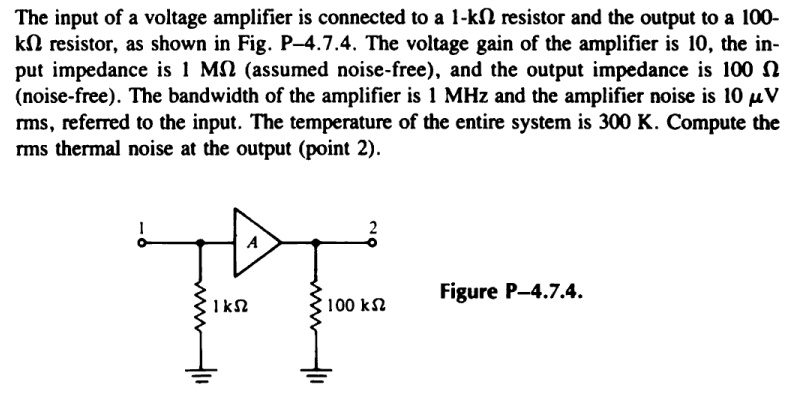The input of a voltage amplifier is connected to a 1−kΩ resistor and the output to a 100 kΩ resistor, as shown in Fig. P-4.7.4. The voltage gain of the amplifier is 10, the input impedance is 1 MΩ (assumed noise-free), and the output impedance is 100 Ω (noise-free). The bandwidth of the amplifier is 1 MHz and the amplifier noise is 10 μV rms, referred to the input. The temperature of the entire system is 300 K. Compute the rms thermal noise at the output (point 2). Figure P−4.7.4.
